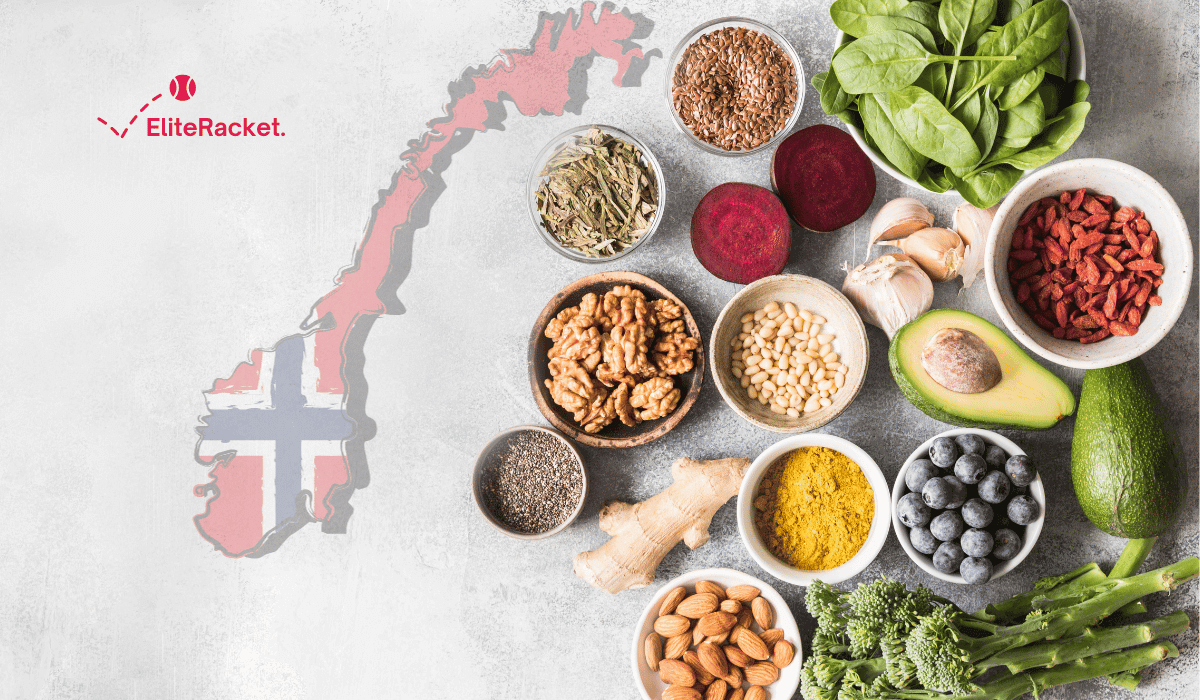Introduction
Padel, the fast-paced racket sport that has taken the world by storm, is not just about agility and skill on the court; it’s also about how players fuel their bodies.
The culinary preferences of padel players can be as diverse as their playing styles, especially when comparing countries with distinct food cultures like Norway, Spain, and Italy.
Let’s serve up some insight into what these athletes cook and eat to stay at the top of their game.

Energy from the North
Firstly, in Norway, the diet of a padel player is tailored to combat the cold climate and provide sustained energy. Norwegian players often start their day with a hearty breakfast.
Porridge, made from oats or barley, is a popular choice. It’s a simple dish, yet packed with complex carbohydrates, providing long-lasting energy, which is essential for the endurance padel requires. If you need any Norwegian kitchen equipment, check out Smartkjokken kitchen gadgets.
Transitioning to lunch, you’ll find these athletes opting for lean protein like grilled salmon or cod, staples in the Norwegian diet. The omega-3 fatty acids in these fish are excellent for reducing inflammation, which can result from intense physical activity.
Alongside, they might have whole-grain bread and a variety of vegetables, like carrots and kale, to ensure a balance of fiber and vitamins.
For dinner, Norwegian padel players might cook up something like kjøttkaker, traditional Norwegian meatballs made leaner for the athletic diet.
They’re often served with boiled potatoes and swede for a comforting end to the day that replenishes spent energy reserves.
Learn more about Norwegian food and recipes at smartkjokken.
The Spanish Flavor: A Mediterranean Touch

Meanwhile, in Spain, the birthplace of padel, players immerse themselves in the rich Mediterranean diet known for its health benefits.
Spanish padel champions likely greet the morning with a simple yet energizing breakfast of tostada con tomate—a toasted bread rubbed with fresh tomato, drizzled with olive oil, and sprinkled with a pinch of salt.
Come midday, a Spanish padel player enjoys a balanced lunch that provides both energy and satisfaction. A typical meal could include a mixed salad with fresh vegetables, nuts, and fruits dressed in olive oil, a source of healthy fats that promote joint health.
They often accompany this with a portion of protein, such as grilled chicken or a Spanish omelet called tortilla Española, made with eggs and potatoes, offering a blend of protein and carbs.
Dinner in Spain often happens later in the evening and is lighter. Padel players might choose grilled fish or seafood, which is a dietary staple, served alongside grilled vegetables.
This combination ensures a meal low in saturated fats but high in protein and minerals.
Italian Cuisine: Carbs and Comfort
Crossing into Italy, a country where cuisine holds cultural significance, Italian padel players also have a unique approach to their diet. Italian players might start their day with a simple espresso and a piece of fresh fruit.
This light breakfast is a nod to the Italian principle of eating to live, not living to eat, and keeping things minimalistic before a match or training session.
Lunch is often the main meal of the day in Italy. Padel players, like any performance athlete, concentrate on balance and digestibility. Pasta is a quintessential Italian food and a source of complex carbohydrates, providing ample energy for the day’s activities.
Players choose whole-grain versions and pair them with light sauces like tomato and basil or a dash of olive oil and garlic, ensuring they aren’t weighed down for afternoon matches.
For dinner, Italian players might prepare a lean protein such as grilled chicken or fish, accompanied by a side of roasted vegetables and a salad.
The focus is on lean proteins and fiber-rich vegetables that aid in muscle recovery and provide essential nutrients without an excess of calories.
Snacks and Hydration: The Universal Padel Fuel
Regardless of the country, padel players must snack wisely between meals to maintain energy levels. In all three countries, nuts, seeds, and fruits are common snacks that players carry in their bags.
These provide a quick energy source and essential nutrients without being too filling.
Hydration is another critical aspect of a padel player’s diet. In colder climates like Norway, players might prefer room-temperature water or even warm drinks to keep their bodies comfortable.
In the warmer climates of Spain and Italy, staying hydrated often means cool water or electrolyte-rich sports drinks to replenish what’s lost during play.
Conclusion
In essence, the diets of padel players in Norway, Spain, and Italy reflect both the cultural preferences and the nutritional demands of the sport. While Norwegians favor hearty meals to fend off the chill, Spaniards embrace the freshness of the Mediterranean diet, and Italians cherish their balanced approach to carbs and proteins.
Yet, despite these differences, all these athletes share a common goal: to power their bodies for peak performance on the court. They understand that the right food is as much a part of their equipment as their
racket and shoes, and they choose their meals as carefully as they plan their training sessions. The lesson here is universal: the best fuel for sports transcends borders, combining local flavors with the global science of sports nutrition.
